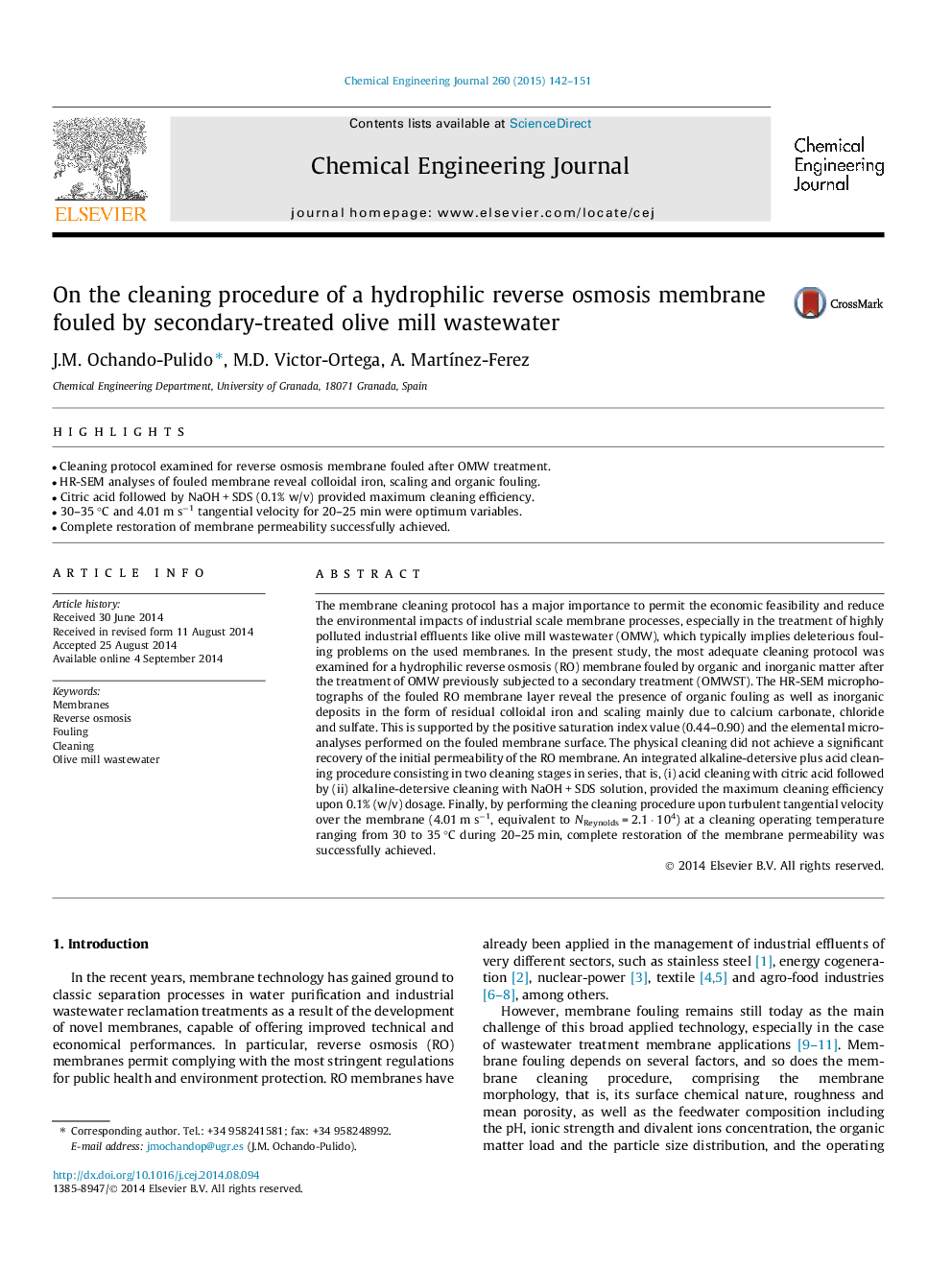| کد مقاله | کد نشریه | سال انتشار | مقاله انگلیسی | نسخه تمام متن |
|---|---|---|---|---|
| 146735 | 456378 | 2015 | 10 صفحه PDF | دانلود رایگان |
• Cleaning protocol examined for reverse osmosis membrane fouled after OMW treatment.
• HR-SEM analyses of fouled membrane reveal colloidal iron, scaling and organic fouling.
• Citric acid followed by NaOH + SDS (0.1% w/v) provided maximum cleaning efficiency.
• 30–35 °C and 4.01 m s−1 tangential velocity for 20–25 min were optimum variables.
• Complete restoration of membrane permeability successfully achieved.
The membrane cleaning protocol has a major importance to permit the economic feasibility and reduce the environmental impacts of industrial scale membrane processes, especially in the treatment of highly polluted industrial effluents like olive mill wastewater (OMW), which typically implies deleterious fouling problems on the used membranes. In the present study, the most adequate cleaning protocol was examined for a hydrophilic reverse osmosis (RO) membrane fouled by organic and inorganic matter after the treatment of OMW previously subjected to a secondary treatment (OMWST). The HR-SEM microphotographs of the fouled RO membrane layer reveal the presence of organic fouling as well as inorganic deposits in the form of residual colloidal iron and scaling mainly due to calcium carbonate, chloride and sulfate. This is supported by the positive saturation index value (0.44–0.90) and the elemental microanalyses performed on the fouled membrane surface. The physical cleaning did not achieve a significant recovery of the initial permeability of the RO membrane. An integrated alkaline-detersive plus acid cleaning procedure consisting in two cleaning stages in series, that is, (i) acid cleaning with citric acid followed by (ii) alkaline-detersive cleaning with NaOH + SDS solution, provided the maximum cleaning efficiency upon 0.1% (w/v) dosage. Finally, by performing the cleaning procedure upon turbulent tangential velocity over the membrane (4.01 m s−1, equivalent to NReynolds = 2.1 · 104) at a cleaning operating temperature ranging from 30 to 35 °C during 20–25 min, complete restoration of the membrane permeability was successfully achieved.
Journal: Chemical Engineering Journal - Volume 260, 15 January 2015, Pages 142–151
